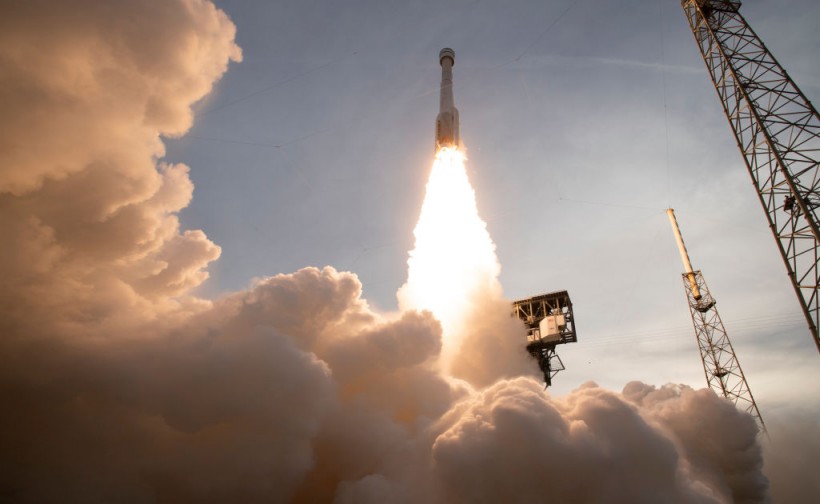NASA's commercial crew program successfully docked Boeing's CST-100 Starliner spacecraft to the International Space Station on Friday.
The space agency launched the Starliner Space Launch Complex-41 at Cape Canaveral Space Force Station in Florida atop United Launch Alliance (ULA) Atlas V rocket on May 19, as Science Times previously reported.
Starliner underwent a series of system tests following its launch into orbit to ensure the spacecraft was "healthy" and capable of safe maneuvering.
"Starliner has proven safe, autonomous rendezvous and docking capability. We're honored to join the fleet of commercial spacecraft capable of conducting transportation services to the space station for NASA," Boeing Space and Launch senior vice president Jim Chilton said in a statement.
The uncrewed Starliner docked successfully after a previous attempt failed in 2019. It could not communicate with the ISS due to a software issue that prevented it from reaching the proper orbit.

CAPE CANAVERAL, FL - MAY 19: In this handout photo provided by NASA, a United Launch Alliance Atlas V rocket with Boeings CST-100 Starliner spacecraft launches from Space Launch Complex 41 on May 19, 2022 in Cape Canaveral, Florida. Boeings Orbital Flight Test-2 (OFT-2) is Starliners second uncrewed flight test and will dock to the International Space Station as part of NASA's Commercial Crew Program. OFT-2 launched at 6:54 p.m. ET, and will serve as an end-to-end test of the system's capabilities.
Boeing Starliner's ISS Mission
According to Boeing and NASA, this flight test will help gather more data to certify the spacecraft for crewed flights to the International Space Station. The Starliner may transport up to four crew members at once.
The mission's goal was to provide Boeing and NASA with enough data to demonstrate that Starliner could deliver humans to the International Space Station, SciTechDaily reported.
ALSO READ: NASA JPL Says Voyager 1 Spacecraft Seem to Be Mysteriously Confused With Data
Until it is ready to undock and return to Earth, Business Insider said Starliner would remain connected to the space station with most of its systems turned off.
Boeing's Starliner was planned to carry up to seven passengers, or a combination of passengers and cargo, on NASA service missions to conduct scientific research on the International Space Station. It can be reused up to 10 times with a six-month turnaround time.
How Boeing CST-100 Starliner Spacecraft and Rosie Mannequin Looked Like
NASA astronaut Bob Hines gave the first glimpse inside Boeing's CST-100 Starliner spacecraft, which joined with the International Space Station (ISS) for the first time.
"Welcome to #Starliner for the very first time ever, in space." @Astro_FarmerBob takes us on a tour inside the @BoeingSpace spacecraft that arrived on Friday, May 20, on a demonstration flight to the International @Space_Station: pic.twitter.com/uaezcvaWGw
— NASA (@NASA) May 21, 2022
Hines gave a quick tour of the Starliner through his Twitter account. The said spacecraft, according to Digital Trends, is expected to transport astronauts to and from the International Space Station on flights launched from American soil once completely proven.
Rosie, a sensor-laden mannequin meant to assist researchers in learning more about the functioning of the spaceship throughout its mission and its impact on the human body, is seen in the clip from within the Starliner spacecraft.
#Starliner has entered a planned quiescent phase while docked to the @space_station, which means its systems were powered down just like they would be during a long-duration mission.
— Boeing Space (@BoeingSpace) May 22, 2022
📷: @AstroSamantha pic.twitter.com/YuS53J59kk
NASA also shared a shot of the Starliner moored at the station, noting that its systems have been turned down, as they would be on a typical journey to the space station.
The Starliner will spend five to 10 days docked at the space station before returning to Earth via a parachute-assisted landing in New Mexico. After that, NASA and Boeing will assess the flight's success before determining whether to schedule a crewed test of the spacecraft on another journey to the International Space Station, probably before the end of the year.
RELATED ARTICLE: Boeing Clashes With Key Supplier as NASA Prepares CST-100 Starliner Spacecraft Test Flight for International Space Station Launch
Check out more news and information on Space in Science Times.














